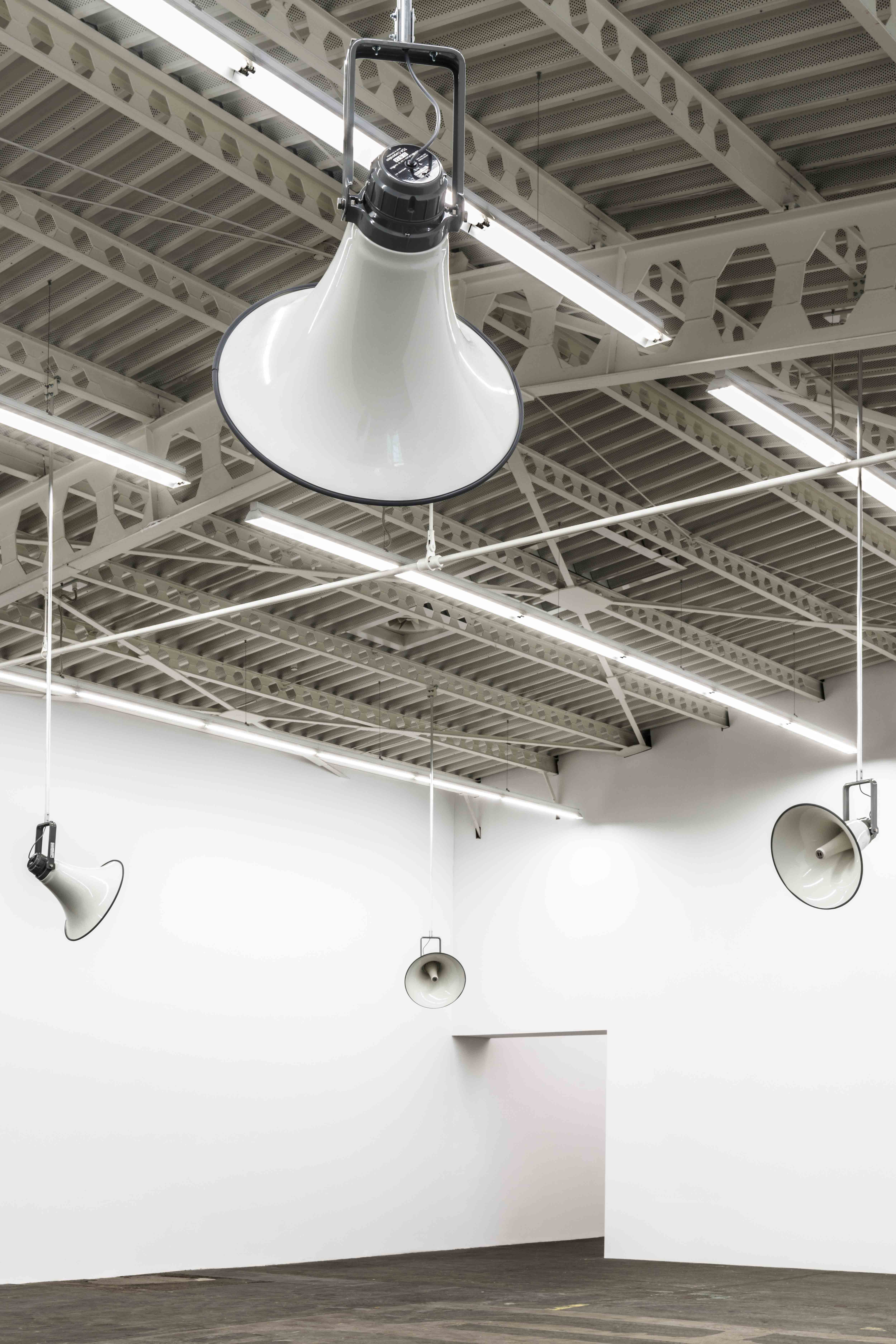Susan Philipsz
War Damaged Musical Instruments (Shellac), 2015
Artist
Susan Philipsz
Title
War Damaged Musical Instruments (Shellac)
Year of creation
2015
Technology and dimensions
multi-channel sound installation: 6 speakers TOA TH-650, media player, amplifier, 6 USB memory sticks, 6 hanging devices / installation dimensions variable
Year of acquisition
2016
Acquisition of the foundation
The Scottish artist Susan Philipsz has been working on the rearrangement of musical/literary sources and specific historical constellations for around two decades. The artist often uses common (pop) music sequences, some of which she herself performs a capella. These include songs by the groups Nirvana, Radiohead and Velvet Underground as well as Irish and Scottish ballads, folk songs, workers' songs, shanties and classical compositions (John Dowland, Ravel, Offenbach).
Back in 2014, Susan Philipsz developed a sound installation for Eastside Projects in Birmingham based on the artist's compositions for war-damaged musical instruments. The musical instruments - mostly wind instruments from the First World War period, which were covered with a thick layer of shellac to avoid light reflections, so to speak camouflaged - were in institutional collections and had been displayed in display cases unused for decades. Philipsz condenses the recordings of the musical instruments played individually into a "broken ensemble" and thus creates an impressive, room-filling sound installation.
For her installation “War Damaged Musical Instruments (Shellac),” Susan Philipsz arranges new recordings of musical instruments from the collections of military history museums in Great Britain that were destroyed during the First World War: a shot-up flugelhorn; a cavalry horn (E flat major) recovered from the wreck of the British freighter SS Pomeranian, sunk by a German submarine in 1918; a clarinet (E flat major) destroyed by shrapnel; and a German tuba, captured as a trophy in trench warfare. The melody follows the military trumpet signal "Taptoe" (or: "Tap" or "The Last Post"), which announced to the fighting troops and the wounded that the battle was over and the soldiers, following the sound of the trumpet, should return home to their family. Each instrument is assigned separately to one of the loudspeakers, which deforms the sound to the greatest possible degree of abstraction.
Her work was most recently shown at dOCUMENTA 13, as part of the “Sound Art” exhibition at MoMA New York, at the Hamburger Bahnhof – Museum für Aktuell – Berlin and at the K21 in Düsseldorf. In 2010 Susan Philipsz received the Turner Prize.
